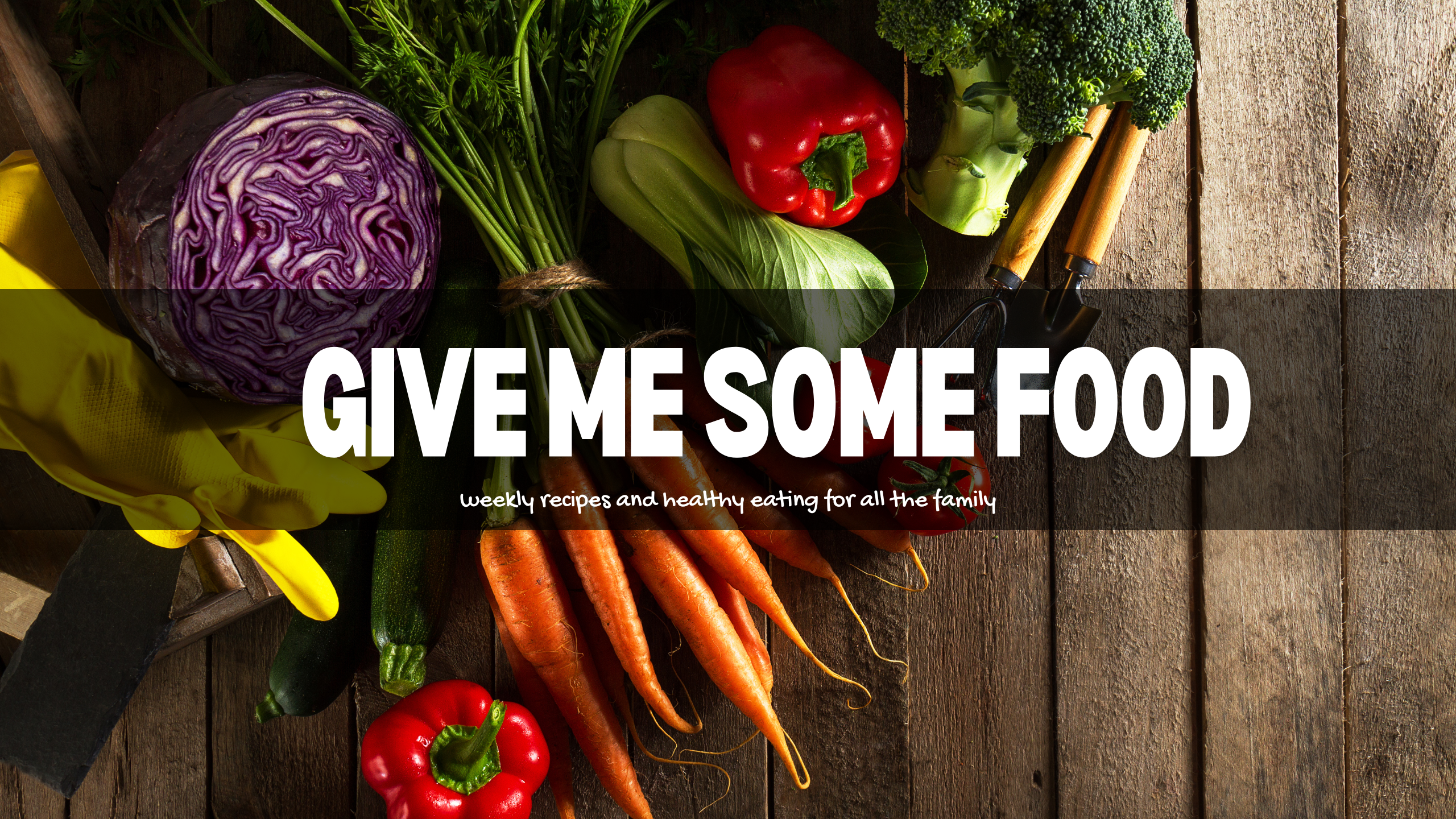In recent years, plant-based diets have become more popular as people learn about their health benefits, environmental impact, and ethical reasons. Many individuals are turning to plant-based eating not just for wellness, but also to reduce their carbon footprint and support animal welfare. This growing movement is changing the way people think about food and nutrition.
Whether you’re a committed vegan, a flexible eater, or just trying to eat more vegetables, plant-based recipes can fit easily into your routine. These meals are often packed with nutrients and flavor, offering a healthy alternative to traditional animal-based dishes. Plus, they come in many forms—from hearty soups to colorful stir-fries and delicious desserts.
Plant-based recipes also encourage creativity in the kitchen. They invite you to explore new ingredients, spices, and cooking methods that can bring fresh excitement to your meals. With so many easy and tasty options available, adding more plant-based meals to your diet has never been more fun or rewarding.
This complete article will explore the fundamentals of plant-based cooking, the benefits of a plant-based diet, essential ingredients, tips for transitioning, and a collection of mouthwatering recipes to inspire your culinary journey.
What Does “Plant-Based” Mean ?

The term “plant-based” describes diets and recipes that mainly include foods that come from plants. This includes vegetables, fruits, grains, legumes, nuts, and seeds. These foods form the foundation of plant-based meals and provide a wide range of nutrients for a balanced diet.
Plant-based eating is different from strict veganism. While vegan diets completely avoid all animal products for ethical or moral reasons, plant-based diets are more flexible. They focus on eating mostly plant foods for better health and a lighter environmental impact.
Some people following a plant-based diet may still include small amounts of meat, dairy, or eggs. However, the main goal is to base most meals around wholesome plant foods. This approach can support long-term health, reduce disease risk, and promote a more sustainable lifestyle.
Common Misconceptions
Plant-based means vegan – Not exactly: While plant-based diets focus mainly on foods from plants, they don’t always completely exclude animal products. Some people who follow a plant-based lifestyle may still eat small amounts of meat, dairy, or eggs. In contrast, vegans avoid all animal-derived foods for ethical, environmental, or health reasons.
It’s bland or boring – Definitely not: A common myth is that plant-based recipes lack taste, but that’s far from the truth. These meals can be full of rich, bold flavors by using a wide variety of herbs, spices, and seasonings. Creative cooking methods such as roasting, grilling, or sautéing also add depth and excitement to plant-based dishes.
Difficult to get enough protein – Actually, it’s manageable: Another misconception is that plant-based diets don’t provide enough protein. In reality, many plant foods like lentils, beans, tofu, quinoa, nuts, and seeds are excellent sources of protein that can support a healthy, balanced diet.
Why Choose Plant-Based Recipes ?
Health Benefits
Lower risk of chronic diseases: A plant-based diet may help reduce the risk of serious health issues like heart disease, type 2 diabetes, and some types of cancer due to its focus on whole, nutrient-rich foods.
Better weight management: Since plant foods are generally low in calories and high in fiber, they can help you feel full longer and support healthy weight control.
Improved digestion: The high fiber content in fruits, vegetables, and whole grains supports regular bowel movements and promotes overall gut health.
Increased nutrient intake: Eating a wide range of plant-based foods provides your body with essential vitamins, minerals, and antioxidants that support energy, immunity, and overall well-being.
Environmental Impact
Animal farming is a leading cause of greenhouse gas emissions, deforestation, and excessive water use. Choosing plant-based foods helps lower the demand for these resources and reduces environmental harm. By shifting to a more plant-focused diet, you can decrease your ecological footprint and support a more sustainable planet. It’s a simple yet powerful way to make a positive impact on the environment through everyday food choices.
Ethical Considerations
Many people adopt plant-based diets to avoid supporting industries that involve animal suffering and exploitation.
Essential Ingredients for Plant-Based Cooking
Creating delicious plant-based recipes relies on some key staples. Stock your pantry with these ingredients:
Legumes
Lentils: Red, green, brown — versatile and rich in protein.
Chickpeas: Great for curries, salads, and making hummus.
Black beans, kidney beans, navy beans: Perfect for stews, chili, and more.
Whole Grains
Quinoa: Complete protein and cooks quickly.
Brown rice, wild rice: Nutty flavors, excellent bases.
Oats: Breakfast staple and baking ingredient.

Vegetables and Fruits
Fresh, seasonal veggies like kale, spinach, broccoli, carrots, bell peppers.
Fruits for snacks, desserts, or fresh sauces.
Nuts and Seeds
Almonds, walnuts, cashews: great for snacking or making creamy sauces.
Chia seeds, flaxseeds: rich in omega-3s and fiber.
Plant-Based Proteins
Tofu and tempeh: Soy-based, versatile protein sources.
Seitan: Wheat gluten, great for meat substitutes.
Plant-based meat alternatives: Many varieties now available.
Flavor Enhancers
Nutritional yeast: cheesy flavor.
Miso paste: umami richness.
Tamari or soy sauce.
Herbs and spices: cumin, turmeric, garlic, ginger, coriander, paprika.
Delicious Plant-Based Recipes to Try
Creamy Chickpea Curry
Creamy Chickpea Curry is a rich and flavorful dish made with tender chickpeas simmered in a smooth, spiced coconut sauce. This hearty curry is perfect for lunch or dinner and pairs well with rice or warm naan. It’s quick to prepare, making it ideal for busy days when you want something healthy and filling.
As one of the most satisfying plant-based recipes, it offers both taste and nutrition in every bite. Packed with protein and fiber, this curry supports a balanced diet without using any animal products. Whether you’re vegan or just exploring plant-based recipes, this dish is a delicious way to enjoy wholesome ingredients in a comforting and creamy meal.
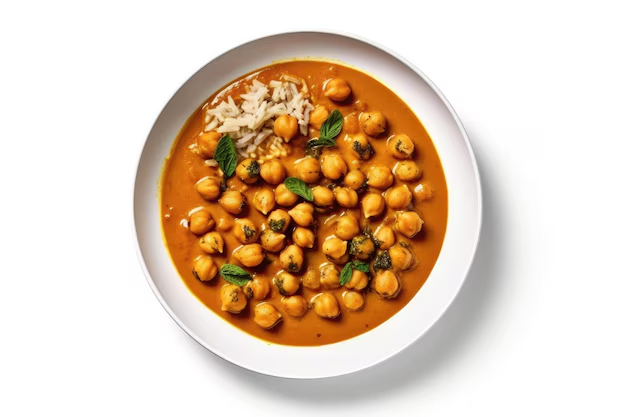
Ingredients:
1 tbsp coconut oil
1 onion, chopped
3 garlic cloves, minced
1 tbsp grated ginger
2 tsp curry powder
1 tsp turmeric
1 can diced tomatoes
1 can coconut milk
2 cans chickpeas, drained and rinsed
Salt and pepper to taste
Fresh cilantro for garnish
Instructions:
Heat oil in a large pan. Sauté onions until translucent.
Add garlic, ginger, curry powder, and turmeric. Cook for 2 minutes.
Stir in tomatoes and coconut milk; bring to a simmer.
Add chickpeas, cook for 15 minutes until sauce thickens.
Season with salt and pepper, garnish with cilantro.
Serve with brown rice or naan bread.
Quinoa Salad with Roasted Vegetables and Tahini Dressing
Quinoa Salad with Roasted Vegetables and Tahini Dressing is a colorful and tasty meal packed with nutrients. It features fluffy quinoa mixed with roasted veggies like carrots, zucchini, and bell peppers. The creamy tahini dressing adds a nutty flavor that ties everything together. This dish is perfect for lunch, dinner, or meal prep, and it’s both light and satisfying.
As one of the best plant-based recipes, it provides protein, fiber, and healthy fats without any animal products. Whether you’re following a vegan diet or simply adding more plant-based recipes to your routine, this salad is a fresh and flavorful choice that’s easy to prepare and enjoy.
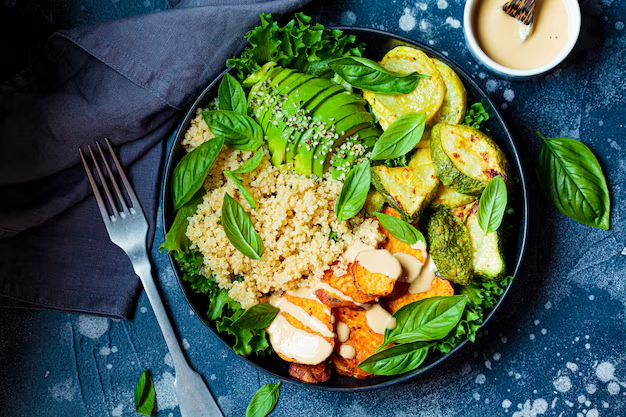
Ingredients:
1 cup quinoa, rinsed
2 cups water
1 sweet potato, cubed
1 red bell pepper, chopped
1 zucchini, sliced
Olive oil
Salt and pepper
Instructions:
Preheat oven to 400°F (200°C). Toss sweet potato, bell pepper, and zucchini with olive oil, salt, and pepper. Roast for 25-30 minutes.
Cook quinoa in water until fluffy, about 15 minutes.
Mix tahini, lemon juice, maple syrup, and garlic; add water until desired consistency.
Combine quinoa, roasted veggies, and drizzle with dressing. Toss gently and serve.
Lentil and Vegetable Stir-Fry
Lentil and Vegetable Stir-Fry is a quick and healthy meal full of color and flavor. It combines cooked lentils with crisp vegetables like broccoli, bell peppers, and snap peas, all tossed in a light soy or sesame sauce. This dish is perfect for busy nights when you want something filling yet nutritious. It’s rich in plant protein and fiber, making it one of the most satisfying plant-based recipes.
You can serve it on its own or over rice or noodles for extra heartiness. Great for vegans and anyone exploring more plant-based recipes, this stir-fry offers a simple way to enjoy wholesome ingredients in a tasty, well-balanced meal that’s both easy to make and good for you.

Ingredients:
1 cup cooked green lentils
1 tbsp sesame oil
1 onion, sliced
2 cloves garlic, minced
1 red bell pepper, julienned
1 cup broccoli florets
2 tbsp soy sauce or tamari
1 tsp grated ginger
Sesame seeds for garnish
Instructions:
Heat sesame oil in a wok or large skillet.
Sauté onions and garlic until fragrant.
Add bell pepper and broccoli; stir-fry for 5-7 minutes.
Mix in cooked lentils, soy sauce, and ginger; cook 2-3 minutes more.
Garnish with sesame seeds and serve with steamed rice or noodles.
Vegan Mushroom Stroganoff
Vegan Mushroom Stroganoff is a creamy, comforting dish made with tender mushrooms and a rich, dairy-free sauce. It’s perfect for a cozy dinner and pairs well with pasta, rice, or mashed potatoes. This hearty meal brings together savory flavors and smooth texture without using any animal products.
As one of the most loved plant-based recipes, it’s a great choice for vegans or anyone wanting a satisfying meatless option. The mushrooms add a deep, earthy flavor, making the dish both filling and delicious. Whether you’re new to plant-based recipes or a longtime fan, this stroganoff offers a simple and tasty way to enjoy a wholesome, homemade meal that’s full of flavor and comfort.
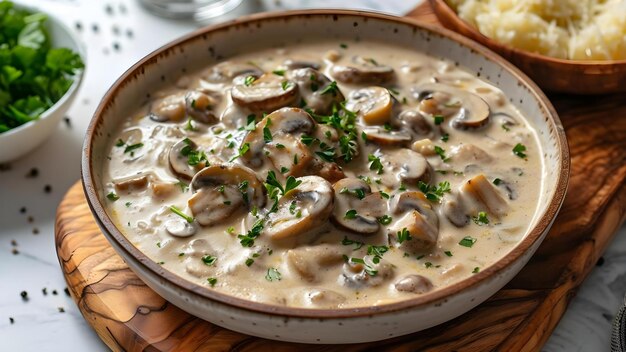
Ingredients:
2 tbsp olive oil
1 onion, diced
3 garlic cloves, minced
3 cups mushrooms, sliced
1 tbsp flour
1 cup vegetable broth
1 cup coconut cream or cashew cream
1 tbsp soy sauce
1 tsp smoked paprika
Salt and pepper
Fresh parsley, chopped
Instructions:
Heat oil in a large pan, sauté onion and garlic until soft.
Add mushrooms, cook until browned.
Stir in flour and paprika, cook 1 minute.
Slowly add broth, stirring constantly.
Add coconut cream and soy sauce; simmer until thickened.
Season, garnish with parsley.
Serve over egg-free pasta or mashed potatoes.
No-Bake Energy Bites
No-Bake Energy Bites are a quick and easy snack that’s both nutritious and satisfying. Made with oats, nut butter, chia seeds, and a touch of sweetener, these bites are packed with fiber, protein, and healthy fats. They require no cooking, making them perfect for busy days when you need a fast and healthy energy boost.
As one of the best plant-based recipes, they are completely free from animal products, offering a simple and delicious option for those on a vegan diet. These energy bites are perfect for a grab-and-go breakfast or a post-workout snack. Whether you’re looking for a healthy treat or just exploring plant-based recipes, these no-bake bites are a tasty and convenient choice.
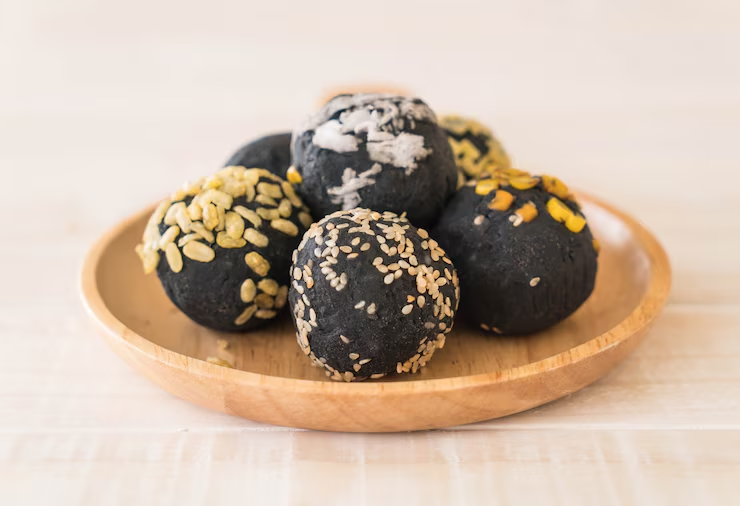
Ingredients:
1 cup rolled oats
1/2 cup peanut butter or almond butter
1/4 cup maple syrup or agave nectar
1/4 cup chia seeds
1/4 cup dark chocolate chips (vegan)
1 tsp vanilla extract
Instructions:
Combine all ingredients in a bowl.
Roll into small balls and refrigerate for at least 30 minutes.
Enjoy as a quick snack or pre-workout boost.
How to Customize Plant-Based Recipes
Plant-based Recipes thrives on versatility. You can:
Swap grains: use barley, millet, or farro instead of quinoa or rice.
Use seasonal vegetables to keep dishes fresh and budget-friendly.
Adjust spice levels to suit your taste.
Add nuts or seeds for crunch and nutrition.
Experiment with different plant milks (almond, oat, soy) in creamy recipes.
Conclusion
Adding plant-based recipes into your diet is more than just a trend—it’s a powerful way to improve your health, support environmental sustainability, and explore exciting culinary possibilities. Whether you’re new to plant-based eating or looking to expand your recipe collection, embracing whole foods like legumes, grains, vegetables, nuts, and seeds offers endless delicious and nutritious options.
These Plant-based Recipes demonstrate that plant-based meals can be satisfying, flavorful, and easy to prepare, making the transition smooth and enjoyable. By experimenting with diverse ingredients and cooking techniques, you can create dishes that nourish both body and soul while reducing your ecological footprint. Ultimately, adopting plant-based recipes invites you to join a movement toward mindful eating that benefits you and the planet. So, dive in, get creative, and discover how delicious and fulfilling plant-based cooking can truly be.
FAQs
What are plant-based recipes ?
Plant-based recipes focus on using foods derived from plants, such as fruits, vegetables, grains, nuts, and seeds, without animal products. These recipes are perfect for vegans or anyone looking to reduce their intake of animal-based foods.
Are plant-based recipes healthy ?
Yes, many plant-based recipes are rich in nutrients like fiber, vitamins, and minerals. They can help improve heart health, manage weight, and provide essential nutrients while reducing the risk of chronic diseases.
Do I need special ingredients for plant-based recipes ?
Most plant-based recipes can be made with simple ingredients like vegetables, legumes, grains, and nuts. Specialty items, like plant-based cheeses or milk, may be needed for some recipes but aren’t required for all.
Can I follow a plant-based diet without missing out on flavor ?
Absolutely! Plant-based recipes are full of flavor, thanks to the variety of herbs, spices, and whole foods used. There’s no need to sacrifice taste for health – plant-based meals can be delicious and satisfying.
How do I get enough protein on a plant-based diet ?
There are many plant-based sources of protein, such as beans, lentils, quinoa, tofu, and tempeh. Incorporating these into your plant-based recipes will ensure you meet your protein needs while enjoying a balanced diet.
